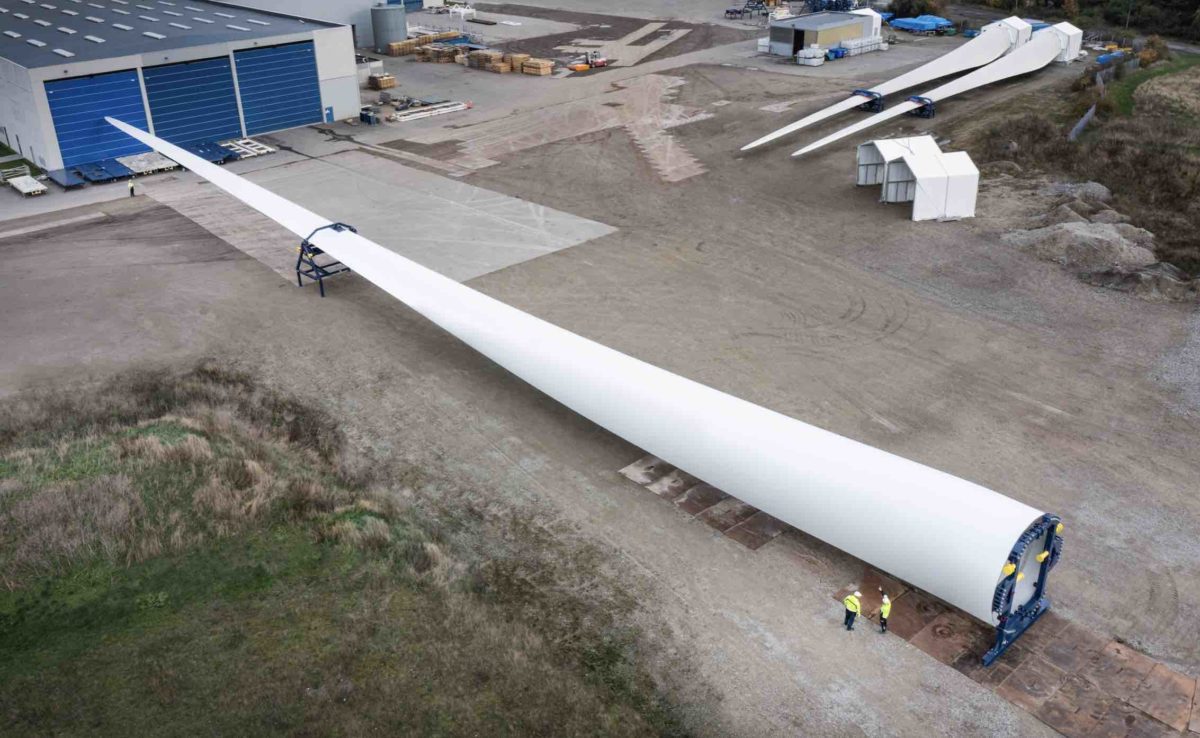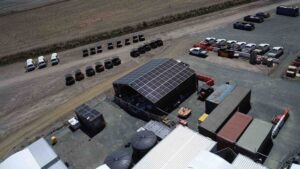Danish wind energy giant Vestas has the first 115.5 metre wind blade, the first of three to be built for the prototype of its 15MW offshore wind turbine.
Both are by far the biggest of their type ever produced by Vestas, and compare with the 10 metre blade produced for the company’s first V10-30 kW turbine that was unveiled in Denmark more than 40 years ago in 1979.
The 15MW turbine was first flagged in early 2021 and will boast a swept area in excess of 43,000 m2 and will be able to generate 80GWh a year, with a capacity factor of 60 per cent – depending on local wind conditions.
To put that into context, each individual turbine would be enough to power 20,000 European households and avoid over 38,000 tonnes of CO2 each year.
Unsurprisingly, then, that the world’s largest rotor needs a big blade, which Vestas unveiled over the weekend. It is the first of three being built for the V236-15.0 MW prototype which Vestas will install at the Østerild National test centre in November.
Serial production of V236-15.0 M blades will begin from the third quarter of 2023 from the company’s blade factory in Taranto, Italy. “This will help us diversify the supply for the growing European offshore market and ensure a competitive product offering,” the company said this week.
However, while wind turbines are getting bigger, European wind turbine orders have shrunk by 36 per cent in the third quarter, well behind the level Europe needs to reach its energy and climate targets.
New figures published late last week by European wind energy trade body WindEurope showed that wind turbine orders in the third quarter were limited to only nine countries and only onshore, with no new offshore orders announced.
In total, only 2GW worth of new turbine orders were placed in the third quarter, led by Finland with 322MW.
Through the first nine months of the year, total European wind turbine orders reached 7.7GW, well behind that which is needed to reach the region’s energy and climate targets.
Considering that the EU wants 510GW of wind energy by 2030, the European wind industry should be installing 39GW of new wind each year through to 2030.










